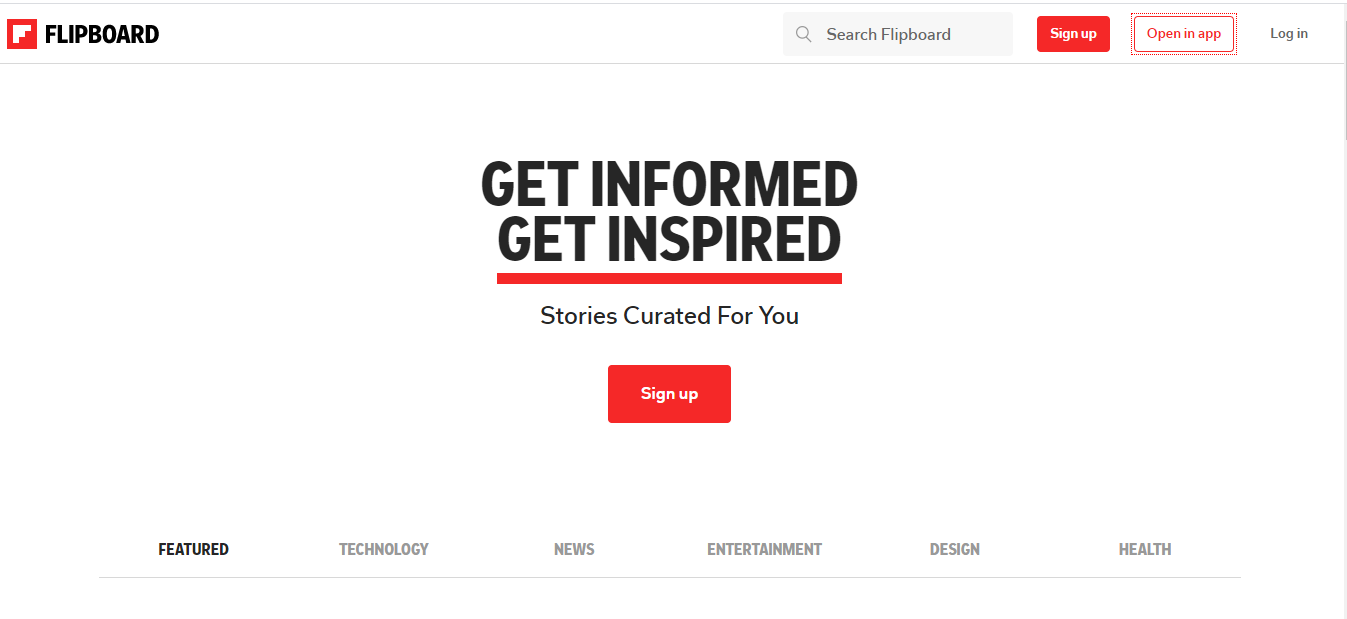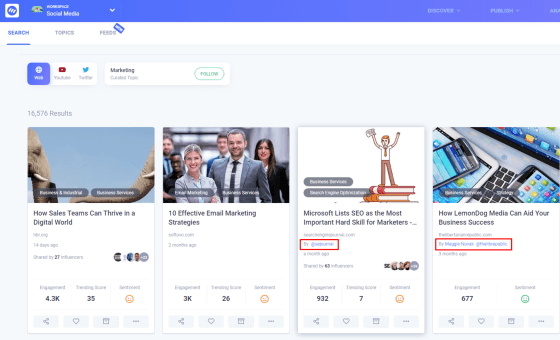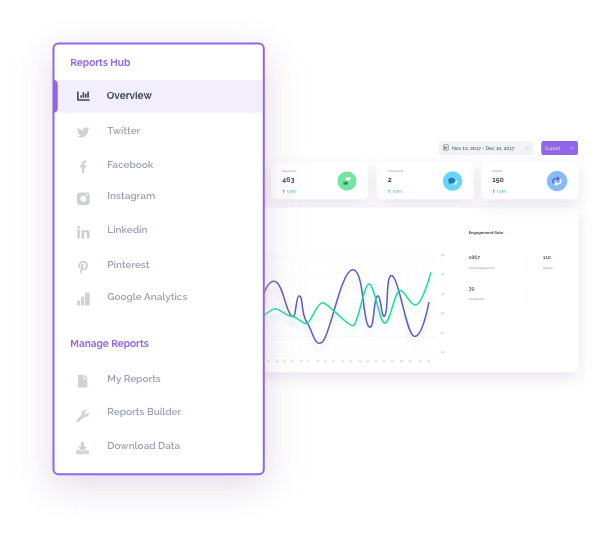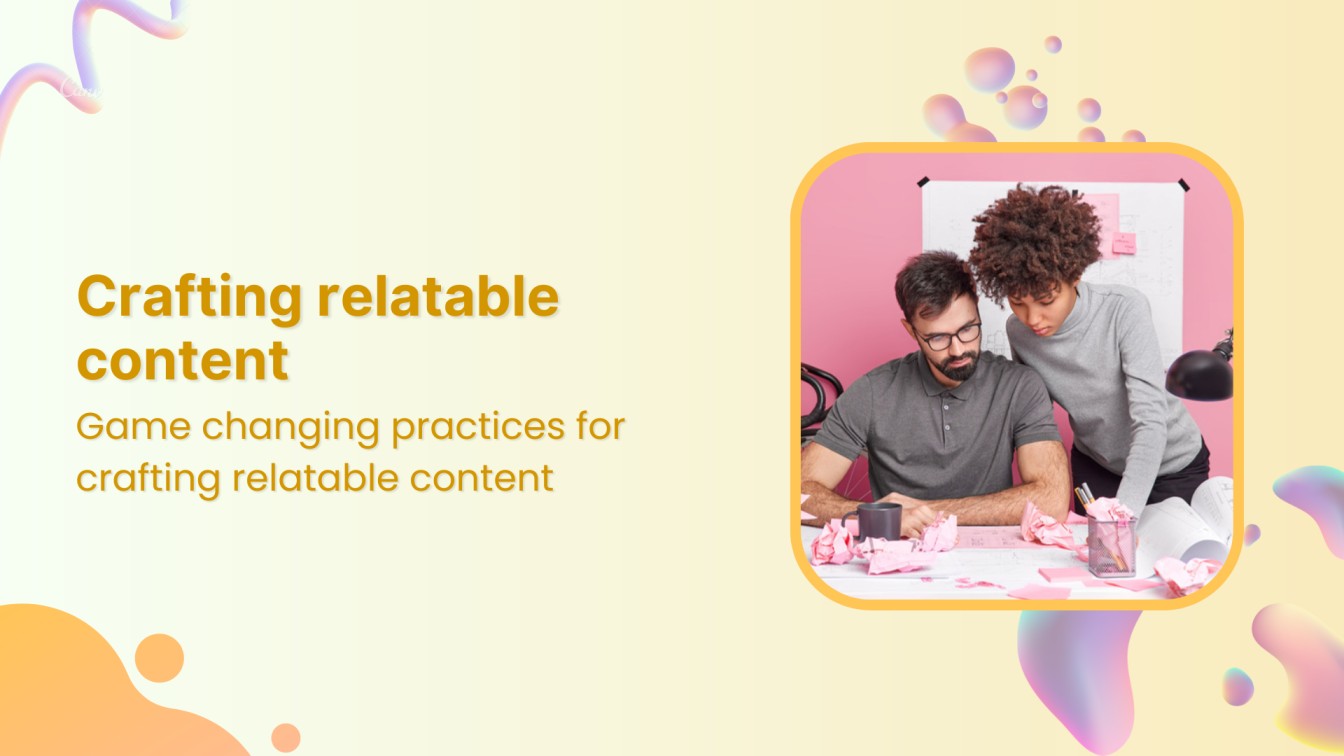If you have been writing and publishing content for a while, you might have stumbled upon the term “content curation” like most of us, but not everyone pays attention to this. As digital marketing space is evolving, the marketing content is becoming vitally important for the prospects engagement and customer acquisition. Therefore, the significance of content curation becomes even more. It’s highly unlikely that everybody who does internet marketing knows about content curation, which is why we decided to talk about that on the blog.
Perhaps we have been caught up in the bubble of putting out fresh content to dominate in search engine results and social media. However, there is no harm in creating and putting out fresh content, but it’s difficult to keep up the pace. So instead of burning out, we could curate content that helps us maintain our content flow without creating content. Therefore, we decided to sit down and spill the beans for you.
Before getting into the cheesy part of the content curation, you should know what’s behind the backdrop. Bloggers, social media experts, and brands bump into curation when they need to feed their followers and subscribers with a high-quality dose of content, and they run out of ideas or feel overwhelmed about putting out content.
Feeling burned out is quite normal; anybody who is putting out content could be burnt out due to working on a consistent basis for a long time. No matter how good you’re at content creation, you could face this issue at some point. Even though every content creator has certain ways of dealing with it, still a lot of us struggle to get through this period. Hence, content curation does help in filling up the gap. In fact, it has become a vital part of the modern-day online marketing strategy.



The Definition of Content Curation
What is Content Curation?
Content Curation is defined as the process of researching and gathering already published content relative to your interest and presenting it to your audience. The act of Content curation is used by many businesses and end-users known as curators.
It does seem like an easy process, but in reality, it isn’t as simple as it looks like. However, the content curation shouldn’t be scary at all. A lot of brands are putting their time and effort into content creation, and interestingly, the content relevant to your topic and presenting it to the audience. A lot of don’t neglect content curation in the race of putting out content. You might see a video on a YouTube channel that comprises snippets of previous videos, or you might come across a round-up blog post that unveils a bunch of blog posts. Content curation has never been this significant before.
Check this video out if you have any more questions going on in your mind.
What is content curation in social media?
Social media Content Curation is defined as the process in which you share social content, videos, articles of others to your social channel. You gather the content of your interest across the social platforms and pin it to your social profile.
Popular Social media Content Curation Platforms
Here are the Popular Social media Content Curation platforms. Take a look at the following websites:
- Scoop.it is perhaps the most popular content curation website out there. It allows users to collect content from different websites and post on their Scoop.it boards/profiles.



- Paper.li does a similar thing to Scoop.it. It’s also a content curation platform that helps users gather content and share with their audience. Many users curate content on their Paper. li profiles according to their niche.



- Flipboard is another social media platform that is famous for content curation. It allows users to gather their personalized content for reading and sharing with others.



We’re not here to recommend a social content curation service. Instead, it’s up to you that how you make it happen. The purpose is to help you understand what content curation stands for. If you’re happy with publishing a blog post that has the compilation of industry’s best blog posts on a certain topic, then you’re good to go.
Some more FAQs
Let’s take a look at how content curation could be a huge help:
Top 6 Benefits of Content Curation
Following are the key benefits of content curation that every content creator should know:
- Content Supply
Content curation could help us fill up the gap when we don’t have new content to publish. Let’s admit that it’s not easy to maintain the content supply. It could be either procrastination or an emergency, which results in the break in the process, but this way, it seems like someone else has got your back.
- Content Diversity
One of the best things happen when we curate content is that it brings in the diversity in our content. Our readership could lose the charm in our content if we keep on supplying the similar type of content to them. Curation allows us to present our audience with something different, not to mention from someone else. It helps us diversify our content
- Research
To make content curation happen, you must have to dig deeper to find out the best content in your niche, which means you have to research a lot – one of the perks of doing research is that not only you just find new stuff to share with the audience, but you also learn new things. The more you research, the better your curation gets.


-
Relationship Building
One of the biggest benefits of content curation is that it builds your relationships with other writers and content creators. For example, if you curate a blog post with ten blog posts and share with your audience, and later on, inform those bloggers, they’ll be happy to see that. Not only are you driving traffic to them, but you’re also giving them respect. Another way of seeing this is that you’re giving them without asking for anything. It would build your relationship with other professionals in your industry. It’s one of the smartest ways to build connections with the influencers.
- Social Media EngagementWhen you get to publish more content, it means you’re pushing out more content on social media. Chances are, you’d get more engagement than before. If you get a few new eyeballs on your curated content, then it would be worth it. Also, there is a chance that those influencers and experts might share your curated content because you’ve mentioned their content, and they could share it with their audience just to thank you for doing that.
- Social Exposure
Don’t underestimate the power of good and helpful content because when someone finds it helpful, they tend to share it with others, and thus the chain begins to build up. You never know which curated post of yours gets shared more and brings in new opportunities for you. There is always a chance of social exposure in content curation. Brands often reach out to me via email when I mention them on my blog.
Now, let’s dive deep into the process of content curation to find out different steps involved in it. At the end of the day, it’s necessary to showcase the step-by-step process to make it easier for everyone.
4 Must-Do Steps to publish effective curated content :
Here are the important steps in getting started with content curation marketing.
STEP#1. Research: Finding the Content
It starts with hunting the best content to share with the audience. Content curation doesn’t mean that you suddenly decide one day to curate content and grab a bunch of links to compile a blog post or a PDF or an infographic to put out. Instead, it requires a little bit of brainstorming to make it happen.
At step one, all you have to think about is the research, for example, you should be thinking about the following things:
- Where to look out for the content
- What social networks you should check out
- What blogs publish content related to your niche
- What influencers’ content you should go through
Besides this, you must know that there are a few tried-and-tested ways of finding the content in a specific niche:
Here’s how to find the curated content:
-
Using the Twitter Search



The Twitter search feature allows you to tap into the conversations people are doing on Twitter about a certain topic. Use the proper hashtags to break into the conversation; you can either become a part of it or just look at what people have to say about it.
The key to finding the content on Twitter is pretty much the right hashtags; if you don’t know what hashtags to use for search, then you must figure out as soon as possible. It shouldn’t be difficult at all if you know your niche and aware of what kind of content you’re curating.
-
Go through the ContentStudio Discovery



The discovery feature of ContentStudio does allow users to sift through the noisy world of social media and search engines to get the hands-on the popular content across various platforms.
You can use the keywords, exact phrases, or domain names to discover the content through Discovery tool.
-
Check your Inbox



If you’re in online marketing or e-commerce or tech space, chances are, you’ve subscribed to tons of blogs to get the latest updates from different sources. Just skim through the inbox and see if you could find the relevant content. Use the search terms related to the subject matter to search through the pile of emails in your inbox. You’re most likely to find the newsletters or blog updates.
STEP#2. Sort Out: Choose What to Share
The research-part is the beginning, next up is sorting. You can’t share whatever pops up during the research. Don’t let the abundance of content make you overwhelmed. It would make the process a whole lot easier if you sit down and analyze what content would make an impact on the readers. It doesn’t matter whether you’re sending an email newsletter or writing a private Facebook group post or publishing a blog post, what matters is that the quality of the selected items must be top-notch.
More importantly, don’t get carried away by all those technical things, meaning, you have to stick to your niche while choosing the content. Readers find it inappropriate if they see any piece of content that is totally irrelevant to the context of the topic.
Once you have the useful resources in hand, it’s up to you how to take care of all the research that you’ve done. Start off with bookmarking the content using the Pocket app. What Pocket app does is that it provides a tagging feature, which allows you to categorize the content with different tags. For example, if you’re curating content on the food photography, you can simply create a tag Food Photography and bookmark all the relevant content using that tag.
Facebook has a feature called Saved. It allows you to save content to your Facebook account. In fact, you can create collections to pile up the similar content. It categorizes the content and helps organize it.
Feedly is a widely popular social bookmarking tool that allows users not just to find new content but also to save it for later read or share.
It isn’t important which tool you use to save and bookmark your content during the content hunt – just be sure that multiple tools don’t make you feel overwhelmed. It’s better to stick with one tool that helps the most. Remember that all of your energies must go into finding the best content for the readers.
STEP#3. Selection: Finalize the Platform and Format
At this stage, you would have the content to share with the audience. So you’d proceed to choose the platform and format of the content. Meaning, you’d have to decide that what type of content you should be choosing, for example, videos, articles, podcasts, or infographics. Similarly, you’d also have to decide which platform suits you, for instance, blog posts, newsletter, or YouTube.
If you passionately read blogs then it’s probably the best that you should curate blog posts and build an audience around that.
For instance, Growth. Email is a popular curated newsletter that sends out content regarding growth hacking and online marketing. Not only do they publish the curated blog posts, but they also send out the newsletters to the subscribers.
Following are the ways to do content curation:
1. Write a Round-up Blog Post
One of the popular ways of content curation is writing a round-up blog post. A lot of brands and bloggers publish round-up blog posts which include the blog posts from different blogs. The purpose could vary from blogger to blogger. However, they understand the importance of content curation, which is why they do it.
Make sure that when you curate a blog post containing the blog posts titles of other blogs, don’t forget to include the links to those blog posts to help guide your readers. If you don’t include the links, then there is no point of curating content when the readers won’t be able to click-through right away.
Copyblogger is one of those sites that publish round-up blog posts on a regular basis. Take a look at this example:
2. Send out a Curated Newsletter
If you’re active with your email newsletter, then you could curate a newsletter containing the blog post URLs or online tools or websites. Most of the times, when brands and experts send out a curated newsletter, they prefer a list of blog posts. However, you could send out a newsletter containing the infographics or PDFs, anyway. The curated newsletter must include the best-suited content from various sources.
Quuu does it perfectly. Take a look at this curated newsletter from Quuu:
3. Make a Video Compilation
The content curation, however, is not limited to the round-up articles. You can surely create a YouTube video that could be a compilation of various clips. Always be aware of the copyright rules; it’s better to seek the permission of the person/brand whose content you’re using in your curation and give the credit where it’s due.
Evan Carmichael does content curation on YouTube. He compiles snippets of various videos of the same person and prepares a list-based video:
Also, watch this video of Gary Vaynerchuk which has the short video clips from his other videos.
4. Design a Curated Infographic
You can always use the power of visual and images in content creation. So it totally makes sense that if you utilize the visual and images in content curation. You can curate infographics based on popular tips on a specific topic or famous tools or useful blog posts. Later on, you can publish the infographic on your blog as well as Pinterest. Neil Patel also uses infographics along with his blog posts and videos.
STEP#4. Execution: Put it Out there
At this point, you must not worry about the number of articles or videos or podcast episodes you’ve gathered for the batch. The number-game shouldn’t cripple you at this moment. It’s necessary to put out content; otherwise, people might forget you and your content.
So once you’re done with your research, format and platform selection, then hit the button and get over with it. You have to put yourself out there, meaning, a lot of you might be overthinking that your curated content could be better or you should add more resources to it. The point is that you won’t improve if you don’t execute it.
Casey Neistat, a popular filmmaker and YouTuber, rightly said, “Ideas are easy, execution is everything.”
It’s important to pay attention to the execution of the content curation process because without the execution, you won’t get there where you want to be. You might gather tons of articles to publish a curated blog post, but you could stop just because you might think they aren’t good enough. So that’s why I mentioned execution at the end of the content curation process.
Don’t let the numbers or anything else stop you from putting out content.
Things you need to know about Content Curation
- Content curation doesn’t mean to portray someone else’s content as yours.
- Don’t mix up content curation with re-posting of already existed content.
- Copying someone else’s content could lead to search engine penalties or copyright strikes.
- It’s better to link to the respective sites or content rather than publishing the content.
- Linking to irrelevant or less-authoritative sites could be deadly from the SEO standpoint.
- Don’t ever forget to give the credit, especially while making a video or an infographic.
- The core purpose of the content curation must be helping out the audience.
- Bloggers and brands appreciate when others include their content in the curation.
- Content curation could lead to a new audience and opportunities.
- Content curation could help you publish more content without having to create content.
- It could build new relationships with the industry’s influencers and experts if you do it the right way.
What’s the Conclusion?
The conclusion is that content curation is a great way of filling up the gap in your content creation process. It doesn’t necessarily mean that you should curate content when you’re burned out. Some bloggers regularly write round-up blog posts to share useful content with their audience.
I have no doubt that no matter how good you’re at content creation; content curation could benefit your marketing efforts by providing high-quality content from the influencers and experts in your niche. However, it doesn’t mean that it’s quite easy to pull off; you might want to spend hours in research before finalizing the content you want to include. The reason is that if your curated content doesn’t do any good, it will waste your time and effort. You’ll be better off if you hunt down the best content possible to curate.
The benefits, however, are humongous: we’ve already discussed that it could lead to building new relationships, developing your social media outreach, and putting out more content on the internet. The upside of content curation is so captivating that a lot of social media agencies and SAAS companies occasionally do this. If you belong to social media or digital marketing space, you might be following lots of marketing-related blogs; pay close attention to their content. Once in a while, they come up with a round-up blog post or an infographic (which contains data from various sources) just to help out and engage the audience.
So content curation is a fantastic way of piling up pieces of great content to share with the current audience and attract the new fans across the web. The purpose was sharing the importance of content curation as well as how to do it.
Hassaan Khan
Hassaan Khan is a freelance writer for SAAS companies, e-commerce stores, and niche websites. He has contributed to SEMrush, ThriveGlobal, BloggingCage, AllBloggingTips, and several other publications. He builds niche websites, publishes e-books, and helps website investors with his done-for-you niche site-building service.






